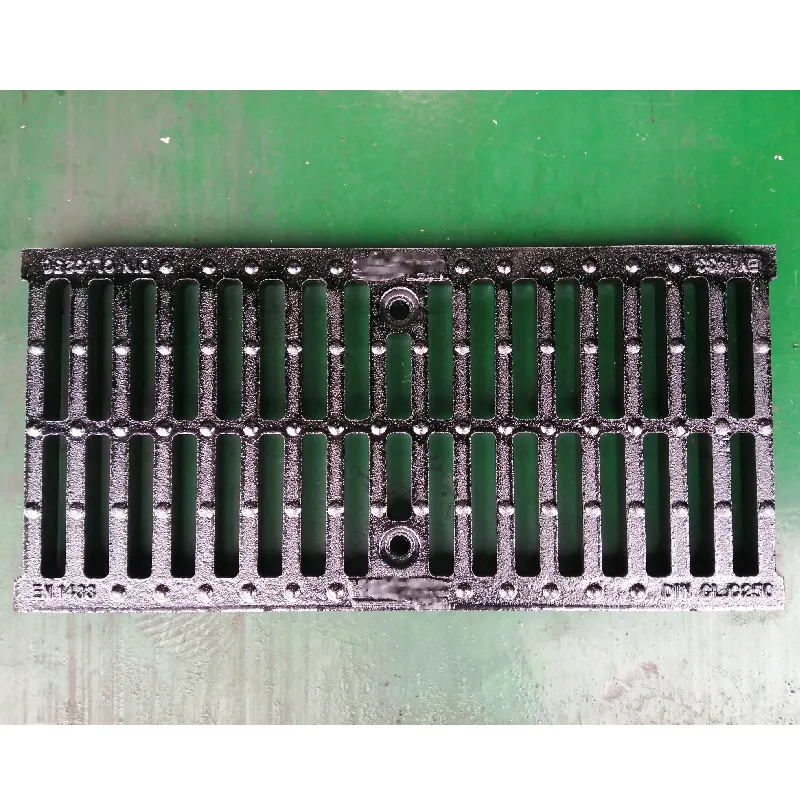inspection chamber cover and frame
Inspection Chamber Cover and Frame An Essential Component of Urban Infrastructure
In urban environments, the infrastructure that supports daily life is often hidden beneath our feet. One such critical element is the inspection chamber cover and frame, a feature that plays a vital role in the maintenance and accessibility of underground utilities. These components are essential not only for functionality but also for safety and aesthetics in public spaces.
Understanding Inspection Chambers
An inspection chamber, also known as a manhole, is a subterranean structure that provides access to underground utilities such as sewer systems, drainage, or electrical conduits. These chambers allow maintenance personnel to inspect, clean, and repair services without the need for extensive excavation, which can be disruptive and costly.
The Role of Covers and Frames
The cover and frame serve as the entry point to these inspection chambers. The frame, typically made of cast iron or concrete, is fixed to the ground and provides a stable support for the cover. The cover itself, designed to sit flush with the road surface, ensures that the chamber remains safe from debris while preventing water ingress. It is often equipped with a variety of features such as locks or hinges to secure it, making it difficult for unauthorized individuals to gain access.
Safety Considerations
Safety is paramount when it comes to inspection chamber covers and frames
. These components must be designed to withstand significant loads, particularly in busy urban areas where vehicles constantly traverse. Standards and regulations govern their design to ensure they can support the weight of cars and trucks without bending or breaking.In addition to structural integrity, covers must also minimize the risk of accidents. Slip resistance is an important factor, especially in wet conditions, as well as proper sealing to prevent unwanted intrusion by animals or debris. Furthermore, the design needs to account for visibility; reflective markings or bright colors can help alert pedestrians and drivers to the presence of an inspection chamber, preventing accidental falls or collisions.
inspection chamber cover and frame

Material Choices
The choice of materials for the covers and frames is crucial not only for durability but also for cost-effectiveness. Traditionally, cast iron has been the material of choice due to its strength and longevity. It can withstand harsh weather conditions and heavy loads while providing a favorable life cycle cost.
However, in recent years, alternatives such as composite materials have gained popularity. These materials can be lighter, reducing the risks of injury for workers during installation and maintenance. They are also corrosion-resistant, which may extend their lifespan in certain environments where water or salt is present.
Aesthetic Integration
While functionality and safety are critical, aesthetic considerations also play a role in the design of inspection chamber covers and frames. Urban planners and designers are increasingly aware of the importance of integrating these elements into the overall public space. Custom designs that reflect local culture or history can enhance the streetscape and contribute to community identity.
For instance, municipalities may incorporate decorative features into the covers, using patterns or logos that symbolize the city. Such thoughtful design choices not only make these structures more visually appealing but also serve as a reminder of the importance of infrastructure in urban life.
Conclusion
The inspection chamber cover and frame may seem like a small and often overlooked component of urban infrastructure, but their importance cannot be understated. They ensure the safety, functionality, and aesthetic harmony of our public spaces. As cities grow and evolve, these elements will continue to play a crucial role in supporting the complex web of utilities that keep modern life running smoothly. Moving forward, the development of innovative materials and designs will further enhance their effectiveness, ensuring that they meet the needs of both maintenance crews and the public alike. In this light, the humble inspection chamber cover and frame stands as a symbol of the intricate balance between utility and design in urban environments.
-
The Smarter Choice for Pedestrian AreasNewsJun.30,2025
-
The Gold Standard in Round Drain CoversNewsJun.30,2025
-
The Gold Standard in Manhole Cover SystemsNewsJun.30,2025
-
Superior Drainage Solutions with Premium Gully GratesNewsJun.30,2025
-
Superior Drainage Solutions for Global InfrastructureNewsJun.30,2025
-
Square Manhole Solutions for Modern InfrastructureNewsJun.30,2025
-
Premium Manhole Covers for Modern InfrastructureNewsJun.30,2025
